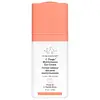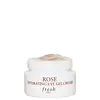What's inside
What's inside
 Key Ingredients
Key Ingredients

 Benefits
Benefits

 Concerns
Concerns

 Ingredients Side-by-side
Ingredients Side-by-side

Water
Skin ConditioningGlycerin
HumectantDicaprylyl Carbonate
EmollientCetearyl Alcohol
EmollientCaprylic/Capric Triglyceride
MaskingHydroxyethyl Acrylate/Sodium Acryloyldimethyl Taurate Copolymer
Emulsion StabilisingSodium Ascorbyl Phosphate
AntioxidantCetearyl Olivate
Sorbitan Olivate
EmulsifyingSclerocarya Birrea Seed Oil
HumectantPersea Gratissima Oil
Skin ConditioningPlukenetia Volubilis Seed Oil
EmollientMagnesium Ascorbyl Phosphate
AntioxidantCeteareth-6 Olivate
EmulsifyingTetrahexyldecyl Ascorbate
AntioxidantAscorbyl Glucoside
AntioxidantAscorbyl Palmitate
AntioxidantPalmitoyl Tripeptide-1
Skin ConditioningGlycine Soja Sterols
EmollientLinoleic Acid
CleansingPhospholipids
Skin ConditioningCeramide NP
Skin ConditioningGlycine Soja Protein
EmulsifyingCeramide AP
Skin ConditioningPhytosphingosine
Skin ConditioningCholesterol
EmollientCeramide EOP
Skin ConditioningCucumis Sativus Fruit Extract
EmollientCamellia Sinensis Leaf Extract
AntimicrobialPalmitoyl Dipeptide-5 Diaminobutyroyl Hydroxythreonine
Skin ConditioningPalmitoyl Dipeptide-5 Diaminohydroxybutyrate
Skin ConditioningDipeptide Diaminobutyroyl Benzylamide Diacetate
Skin ConditioningSodium Hyaluronate Crosspolymer
HumectantC12-15 Alkyl Benzoate
AntimicrobialPanthenol
Skin ConditioningDipotassium Glycyrrhizate
HumectantHesperidin Methyl Chalcone
AntioxidantDipeptide-2
Skin ConditioningPalmitoyl Tetrapeptide-7
Skin ConditioningFragaria Ananassa Seed Extract
AntioxidantMedicago Sativa Extract
TonicMorus Alba Leaf Extract
Skin ConditioningHydrolyzed Rice Protein
Skin ConditioningSpilanthes Acmella Flower Extract
Skin ConditioningAloe Barbadensis Leaf Juice
Skin ConditioningUbiquinone
AntioxidantSuperoxide Dismutase
AntioxidantPalmitoyl Tripeptide-38
Skin ConditioningAcetyl Hexapeptide-8
HumectantPyrus Malus Fruit Extract
Skin ConditioningPhytic Acid
Actinidia Chinensis Fruit Extract
EmollientVaccinium Myrtillus Leaf Extract
AstringentTocopherol
AntioxidantThioctic Acid
AntioxidantN-Hydroxysuccinimide
Skin ConditioningChrysin
Skin ConditioningMica
Cosmetic ColorantEthylhexyl Palmitate
EmollientPhenoxyethanol
PreservativePentylene Glycol
Skin ConditioningSodium Lauroyl Lactylate
EmulsifyingTitanium Dioxide
Cosmetic ColorantHydroxypropyl Cyclodextrin
MaskingSodium Benzoate
MaskingXanthan Gum
EmulsifyingCarbomer
Emulsion StabilisingTocopheryl Acetate
AntioxidantSodium Dextran Sulfate
Gel FormingSorbitan Isostearate
EmulsifyingCaprylyl Glycol
EmollientSteareth-20
CleansingChlorhexidine Digluconate
AntimicrobialCitric Acid
BufferingChlorphenesin
AntimicrobialPolysorbate 60
EmulsifyingPotassium Sorbate
PreservativeEthylhexylglycerin
Skin ConditioningWater, Glycerin, Dicaprylyl Carbonate, Cetearyl Alcohol, Caprylic/Capric Triglyceride, Hydroxyethyl Acrylate/Sodium Acryloyldimethyl Taurate Copolymer, Sodium Ascorbyl Phosphate, Cetearyl Olivate, Sorbitan Olivate, Sclerocarya Birrea Seed Oil, Persea Gratissima Oil, Plukenetia Volubilis Seed Oil, Magnesium Ascorbyl Phosphate, Ceteareth-6 Olivate, Tetrahexyldecyl Ascorbate, Ascorbyl Glucoside, Ascorbyl Palmitate, Palmitoyl Tripeptide-1, Glycine Soja Sterols, Linoleic Acid, Phospholipids, Ceramide NP, Glycine Soja Protein, Ceramide AP, Phytosphingosine, Cholesterol, Ceramide EOP, Cucumis Sativus Fruit Extract, Camellia Sinensis Leaf Extract, Palmitoyl Dipeptide-5 Diaminobutyroyl Hydroxythreonine, Palmitoyl Dipeptide-5 Diaminohydroxybutyrate, Dipeptide Diaminobutyroyl Benzylamide Diacetate, Sodium Hyaluronate Crosspolymer, C12-15 Alkyl Benzoate, Panthenol, Dipotassium Glycyrrhizate, Hesperidin Methyl Chalcone, Dipeptide-2, Palmitoyl Tetrapeptide-7, Fragaria Ananassa Seed Extract, Medicago Sativa Extract, Morus Alba Leaf Extract, Hydrolyzed Rice Protein, Spilanthes Acmella Flower Extract, Aloe Barbadensis Leaf Juice, Ubiquinone, Superoxide Dismutase, Palmitoyl Tripeptide-38, Acetyl Hexapeptide-8, Pyrus Malus Fruit Extract, Phytic Acid, Actinidia Chinensis Fruit Extract, Vaccinium Myrtillus Leaf Extract, Tocopherol, Thioctic Acid, N-Hydroxysuccinimide, Chrysin, Mica, Ethylhexyl Palmitate, Phenoxyethanol, Pentylene Glycol, Sodium Lauroyl Lactylate, Titanium Dioxide, Hydroxypropyl Cyclodextrin, Sodium Benzoate, Xanthan Gum, Carbomer, Tocopheryl Acetate, Sodium Dextran Sulfate, Sorbitan Isostearate, Caprylyl Glycol, Steareth-20, Chlorhexidine Digluconate, Citric Acid, Chlorphenesin, Polysorbate 60, Potassium Sorbate, Ethylhexylglycerin
Water
Skin ConditioningMethyl Trimethicone
Skin ConditioningGlycerin
HumectantPropanediol
SolventPolyglycerin-3
HumectantSqualane
EmollientButylene Glycol
HumectantDimethicone
EmollientHydroxyethyl Acrylate/Sodium Acryloyldimethyl Taurate Copolymer
Emulsion StabilisingGlyceryl Oleate Citrate
EmulsifyingRosa Damascena Flower Water
MaskingChlorella Vulgaris Extract
Skin ConditioningRosa Damascena Extract
MaskingCucumis Sativus Fruit Extract
EmollientVoandzeia Subterranea Seed Extract
Skin ConditioningRhodiola Crenulata Root Extract
EmollientRosa Damascena Flower Oil
MaskingTocopheryl Acetate
AntioxidantDiphenylsiloxy Phenyl Trimethicone
Skin ConditioningCaprylic/Capric Triglyceride
MaskingPoloxamer 407
EmulsifyingDimethicone/Phenyl Vinyl Dimethicone Crosspolymer
PEG-6
HumectantPolysorbate 60
EmulsifyingSorbitan Isostearate
EmulsifyingXanthan Gum
EmulsifyingSodium Hyaluronate
HumectantSodium Citrate
BufferingCitric Acid
BufferingDisodium Phosphate
BufferingBiosaccharide Gum-2
Skin ConditioningC12-14 Pareth-12
EmulsifyingSodium Benzoate
MaskingPotassium Sorbate
PreservativePhenoxyethanol
PreservativeCaramel
Cosmetic ColorantCitronellol
PerfumingGeraniol
PerfumingWater, Methyl Trimethicone, Glycerin, Propanediol, Polyglycerin-3, Squalane, Butylene Glycol, Dimethicone, Hydroxyethyl Acrylate/Sodium Acryloyldimethyl Taurate Copolymer, Glyceryl Oleate Citrate, Rosa Damascena Flower Water, Chlorella Vulgaris Extract, Rosa Damascena Extract, Cucumis Sativus Fruit Extract, Voandzeia Subterranea Seed Extract, Rhodiola Crenulata Root Extract, Rosa Damascena Flower Oil, Tocopheryl Acetate, Diphenylsiloxy Phenyl Trimethicone, Caprylic/Capric Triglyceride, Poloxamer 407, Dimethicone/Phenyl Vinyl Dimethicone Crosspolymer, PEG-6, Polysorbate 60, Sorbitan Isostearate, Xanthan Gum, Sodium Hyaluronate, Sodium Citrate, Citric Acid, Disodium Phosphate, Biosaccharide Gum-2, C12-14 Pareth-12, Sodium Benzoate, Potassium Sorbate, Phenoxyethanol, Caramel, Citronellol, Geraniol
 Reviews
Reviews

Ingredients Explained
These ingredients are found in both products.
Ingredients higher up in an ingredient list are typically present in a larger amount.
This ingredient is an emollient, solvent, and texture enhancer. It is considered a skin-softener by helping the skin prevent moisture loss.
It helps thicken a product's formula and makes it easier to spread by dissolving clumping compounds.
Caprylic Triglyceride is made by combining glycerin with coconut oil, forming a clear liquid.
While there is an assumption Caprylic Triglyceride can clog pores due to it being derived from coconut oil, there is no research supporting this.
Learn more about Caprylic/Capric TriglycerideCitric Acid is an alpha hydroxy acid (AHA) naturally found in citrus fruits like oranges, lemons, and limes.
Like other AHAs, citric acid can exfoliate skin by breaking down the bonds that hold dead skin cells together. This helps reveal smoother and brighter skin underneath.
However, this exfoliating effect only happens at high concentrations (20%) which can be hard to find in cosmetic products.
Due to this, citric acid is usually included in small amounts as a pH adjuster. This helps keep products slightly more acidic and compatible with skin's natural pH.
In skincare formulas, citric acid can:
While it can provide some skin benefits, research shows lactic acid and glycolic acid are generally more effective and less irritating exfoliants.
Most citric acid used in skincare today is made by fermenting sugars (usually from molasses). This synthetic version is identical to the natural citrus form but easier to stabilize and use in formulations.
Read more about some other popular AHA's here:
Learn more about Citric AcidThis extract comes from cucumber. Cucumbers are mostly made up of water (95%), and the other 5% is composed of: vitamin C, caffeic acid, fatty acids, amino acids, and other minerals.
Cucumbers have anti-inflammatory, barrier repair, and hydrating properties.
They contain shikimate dehydrigenase, an enzyme shown to help reduce inflammation and soothe the skin.
The amino acids found in cucumbers help nourish our skin's natural acid mantle (it's an important part of our skin barrier). This slightly acidic film acts as a barrier to protect us from bacteria, viruses, and other contaminants.
Unless you have an allergy to cucumbers, this is generally a non-irritating ingredient.
Fun fact: Cucumis Sativus is native to South Asia and can now be found on every continent.
Learn more about Cucumis Sativus Fruit ExtractGlycerin is already naturally found in your skin. It helps moisturize and protect your skin.
A study from 2016 found glycerin to be more effective as a humectant than AHAs and hyaluronic acid.
As a humectant, it helps the skin stay hydrated by pulling moisture to your skin. The low molecular weight of glycerin allows it to pull moisture into the deeper layers of your skin.
Hydrated skin improves your skin barrier; Your skin barrier helps protect against irritants and bacteria.
Glycerin has also been found to have antimicrobial and antiviral properties. Due to these properties, glycerin is often used in wound and burn treatments.
In cosmetics, glycerin is usually derived from plants such as soybean or palm. However, it can also be sourced from animals, such as tallow or animal fat.
This ingredient is organic, colorless, odorless, and non-toxic.
Glycerin is the name for this ingredient in American English. British English uses Glycerol/Glycerine.
Learn more about GlycerinThis is a synthetic polymer. It helps improve the texture of products by adding thickness and gel-like feel.
It is also an emulsifer, meaning it prevents ingredients such as oil and water from separating. It also helps evenly disperse other ingredients.
Phenoxyethanol is a preservative that has germicide, antimicrobial, and aromatic properties. Studies show that phenoxyethanol can prevent microbial growth. By itself, it has a scent that is similar to that of a rose.
It's often used in formulations along with Caprylyl Glycol to preserve the shelf life of products.
Polysorbate 60 is used to help stabilize products. It is a surfactant and emulsifier. These properties help keep ingredients together in a product. Surfactants help reduce surface tension between ingredients with different states, such as liquids and solids. Emulsifiers help prevent oils and waters from separating.
Polysorbate 60 is sorbitol-based and created from the ethoxylation of sorbitan. Ethoxylation is a chemical reaction used to add ethylene oxide. Sorbitan is a the dehydrated version of sorbitol, a sugar found in fruits.
In this case, the 60 comes from reacting 60 units of ethylene oxide with sorbitan.
Polysorbates are commonly used in medicine and foods.
Learn more about Polysorbate 60Potassium Sorbate is a preservative used to prevent yeast and mold in products. It is commonly found in both cosmetic and food products.
This ingredient comes from potassium salt derived from sorbic acid. Sorbic acid is a natural antibiotic and effective against fungus.
Both potassium sorbate and sorbic acid can be found in baked goods, cheeses, dried meats, dried fruit, ice cream, pickles, wine, yogurt, and more.
You'll often find this ingredient used with other preservatives.
Learn more about Potassium SorbateSodium Benzoate is a preservative. It's used in both cosmetic and food products to inhibit the growth of mold and bacteria. It is typically produced synthetically.
Both the US FDA and EU Health Committee have approved the use of sodium benzoate. In the US, levels of 0.1% (of the total product) are allowed.
Sodium benzoate works as a preservative by inhibiting the growth of bacteria inside of cells. It prevents the cell from fermenting a type of sugar using an enzyme called phosphofructokinase.
It is the salt of benzoic acid. Foods containing sodium benzoate include soda, salad dressings, condiments, fruit juices, wines, and snack foods.
Studies for using ascorbic acid and sodium benzoate in cosmetics are lacking, especially in skincare routines with multiple steps.
We always recommend speaking with a professional, such as a dermatologist, if you have any concerns.
Learn more about Sodium BenzoateSorbitan Isostearate is an emulsifer and cleaning agent. It is created from isostearic acid and sorbitol.
As an emulsifier, Sorbitan Isostearate prevents oils and water from separating.
Due to its isostearic acid base, it may not be safe for Malassezia or fungal acne.
Learn more about Sorbitan IsostearateTocopheryl Acetate is AKA Vitamin E. It is an antioxidant and protects your skin from free radicals. Free radicals damage the skin by breaking down collagen.
One study found using Tocopheryl Acetate with Vitamin C decreased the number of sunburned cells.
Tocopheryl Acetate is commonly found in both skincare and dietary supplements.
Learn more about Tocopheryl AcetateWater. It's the most common cosmetic ingredient of all. You'll usually see it at the top of ingredient lists, meaning that it makes up the largest part of the product.
So why is it so popular? Water most often acts as a solvent - this means that it helps dissolve other ingredients into the formulation.
You'll also recognize water as that liquid we all need to stay alive. If you see this, drink a glass of water. Stay hydrated!
Learn more about WaterXanthan gum is used as a stabilizer and thickener within cosmetic products. It helps give products a sticky, thick feeling - preventing them from being too runny.
On the technical side of things, xanthan gum is a polysaccharide - a combination consisting of multiple sugar molecules bonded together.
Xanthan gum is a pretty common and great ingredient. It is a natural, non-toxic, non-irritating ingredient that is also commonly used in food products.
Learn more about Xanthan Gum